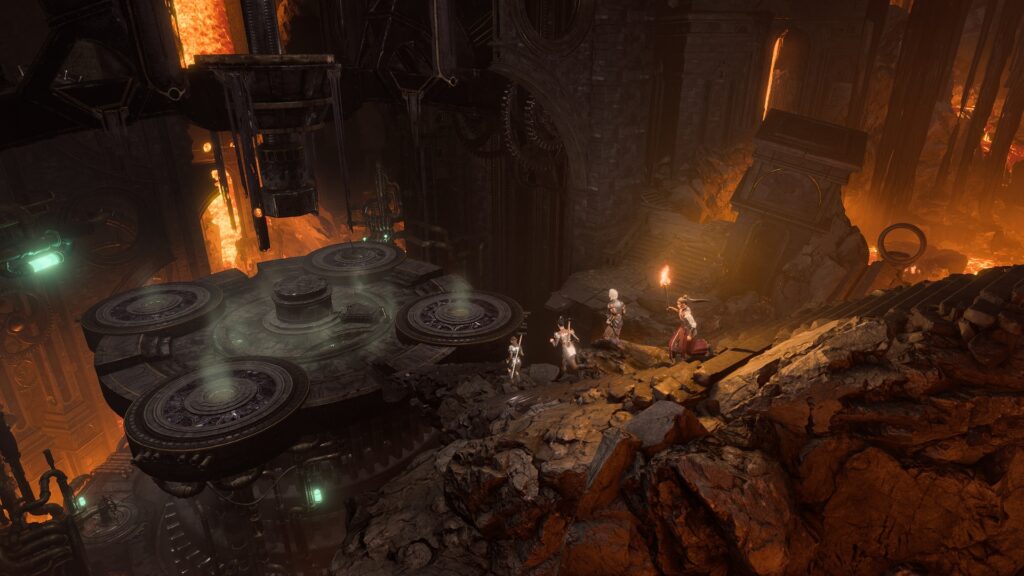Baldur’s Gate 3, developed by Larian Studios, brings forth an immersive and tactical combat experience within the rich and expansive world of the Forgotten Realms. As a highly anticipated role-playing game, Baldur’s Gate 3 introduces a dynamic combat system that seamlessly blends strategic decision-making, diverse character abilities, and interactive environments. In this article, we will delve into the intricacies of Baldur’s Gate 3’s combat system and explore what sets it apart from other RPGs.
Key Takeaways:
- Baldur’s Gate 3 will be turn-based, a first for the series
- The game will use the Dungeons & Dragons 5th Edition ruleset
- Enivornments will be incorporated into gamelay like in Divinity
- Combat will be very strategic and thought provoking
- Share your favorite RPG combat system on the Z League app
One of the defining aspects of Baldur’s Gate 3’s combat is its turn-based nature. Each combat encounter is divided into rounds, with each character and enemy taking turns to act. This system allows for careful planning, as players must assess the battlefield, consider their options, and execute their strategies effectively. The turn-based approach provides a sense of tactical depth and strategic decision-making, enhancing the overall combat experience.
The game utilizes the Dungeons & Dragons 5th Edition ruleset, which serves as the foundation for its combat mechanics. This ruleset is renowned for its balanced and flexible approach to combat, incorporating a wide range of character abilities, spells, and actions. Players can choose from various character classes and races, each offering unique strengths and abilities that can be utilized in combat situations. From fierce warriors and spellcasting wizards to nimble rogues and devout clerics, the diverse array of character options ensures that no two battles feel the same.
Environmental interactivity is another standout feature of Baldur’s Gate 3’s combat system. The game’s highly detailed and interactive environments allow players to exploit the terrain and use it to their advantage. Whether it’s taking cover behind a barricade, pushing enemies off ledges, or setting fire to flammable objects, the possibilities are vast. This adds an extra layer of strategic depth, as players can manipulate the environment to gain the upper hand or create diversions to outsmart their foes.

Moreover, Baldur’s Gate 3 introduces a verticality aspect to combat, with characters able to jump, climb, and descend in the battlefield. This opens up new avenues for positioning and exploration, as players can take advantage of elevated positions for increased accuracy or discover hidden paths and vantage points. The verticality adds a three-dimensional aspect to combat encounters, further emphasizing the importance of spatial awareness and strategic positioning.
Complementing the combat mechanics is the robust AI system that governs enemy behavior. Enemies in Baldur’s Gate 3 are not mere cannon fodder but present formidable challenges. They employ tactical strategies, exploit weaknesses, and adapt to changing circumstances. This creates engaging and dynamic combat encounters, keeping players on their toes and forcing them to constantly adapt their tactics to overcome the evolving challenges.
In addition to traditional combat encounters, Baldur’s Gate 3 introduces narrative-driven interactions and non-violent solutions to conflicts. Players have the freedom to engage in dialogue, persuasion, and manipulation to resolve situations peacefully or influence the outcome of encounters. This branching approach to combat adds depth and flexibility to the gameplay, allowing players to navigate conflicts in ways that align with their character’s personality and goals.
Furthermore, Baldur’s Gate 3 incorporates a deep character progression system that enhances combat abilities. As characters level up, they gain access to new spells, abilities, and feats, allowing for further customization and specialization. This progression system rewards players for their strategic choices and investments in their characters, providing a sense of growth and empowerment throughout the game.
In conclusion, Baldur’s Gate 3’s combat system stands as a shining example of strategic depth and immersive gameplay. The turn-based nature, dynamic environmental interactivity, verticality, and robust AI elevate the combat experience to new heights. With its faithful adaptation of the Dungeons & Dragons 5th Edition ruleset and a wealth of character options, players are presented with countless possibilities for creating unique and engaging combat encounters. Whether engaging in fierce battles or seeking diplomatic resolutions, Baldur’s Gate 3 offers a captivating and rewarding combat experience that will leave players eager for more. So, prepare your weapons, gather your party, and embark on an unforgettable journey through the realms of Baldur’s Gate 3.



